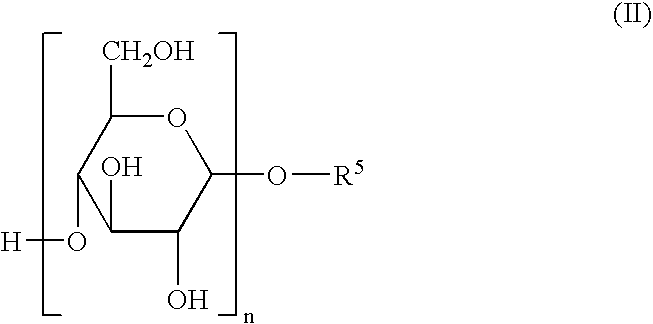Submicron Mesotrione Compositions
- Summary
- Abstract
- Description
- Claims
- Application Information
AI Technical Summary
Benefits of technology
Problems solved by technology
Method used
Image
Examples
example 1
Re-Dispersing of Mesotrione Millbase
[0072] Stability protocol: The millbase, as described in section 3.2, is stored in 2 oz. jars at 38° C. for 6 weeks. The ability to re-disperse sediment is rated on how long, shaking at a moderate speed, it takes to homogenize the sample. Shorter times to re-disperse the sediment are desirable. Jars are shaken horizontally and one complete shake is noted as a complete forward and backward motion. Moderate shaking is approximately 2 complete shakes per second. The sediment must be completely re-dispersed, all sediment free from the bottom of the jar and no lumps or agglomerates in the bulk of the sample.
[0073] Sample 1-1 represents a submicron millbase as set forth in section 3.2. Sample 1-2 has a similar composition but contains millbase having larger particles.
TABLE 1Particle SizeParticle SizeMalvernMalvernNanosizer*Mastersizer*Time to(Z-average,(Median, Dv50,Homogenize afterSampleμm)μm)6 weeks at 38 C.1-10.6130.625 seconds1-2*0.9251.2354 se...
example 2
Improved Final Product Dilution Performance with Submicron Millbase
[0075] Dilution protocol: The Final Product formulation, as set forth in 3.3, are diluted using a typical use rate in water with a hardness of 50 ppm and 1000 ppm. The samples are diluted in a 100 ml graduated cylinder with a total volume of 100 ml (formulation plus water). The samples are then inverted through 10 complete inversions to fully mix the sample. The cylinder is left undisturbed at room temperature for 24 hours. After 24 hours, the number of inversions to completely re-disperse the sediment is noted. The lower the number of inversions required to completely re-disperse the sediment represents an improvement in the ability to re-disperse the Final Product.
[0076] Sample 2-1 represents a submicron millbase as described in section 3.2 having an average particle size as set forth above in Example 1-1. Sample 2-2 has a similar composition but contains millbase having a larger average particle size as set for...
example 3
3.1 Preparation of S-metolachlor EW
[0078] The S-metolachlor EW was prepared according to the following composition:
% wtS-metolachlor66.67A herbicidal antidote3.33Polystyrene3.68A block copolymer1.00Silicone antifoaming agent0.18Water25.12
[0079] The polystyrene and antidote were dissolved in the s-Metolachlor.
[0080] The block copolymer was dissolved in the aqueous phase and the antifoam was added. The two were combined in such a way as to form an emulsified organic phase with a particle size of 1-40 microns.
3.2 Preparation of Mesotrione Millbase
[0081] The mesotrione millbase was prepared according to the following composition:
% wtMesotrione30.00A non-ionic surfactant3.50Acetic acid (56%)11.01Copper hydroxide (100%)5.00Silicone antifoaming agent0.10Xanthan gum0.10Water50.29
[0082] The water, acetic acid, non-ionic surfactant and mesotrione were mixed together. Copper hydroxide was then added. The antifoaming agent and xanthan gum were added and mixed until...
PUM
 Login to View More
Login to View More Abstract
Description
Claims
Application Information
 Login to View More
Login to View More - R&D
- Intellectual Property
- Life Sciences
- Materials
- Tech Scout
- Unparalleled Data Quality
- Higher Quality Content
- 60% Fewer Hallucinations
Browse by: Latest US Patents, China's latest patents, Technical Efficacy Thesaurus, Application Domain, Technology Topic, Popular Technical Reports.
© 2025 PatSnap. All rights reserved.Legal|Privacy policy|Modern Slavery Act Transparency Statement|Sitemap|About US| Contact US: help@patsnap.com

